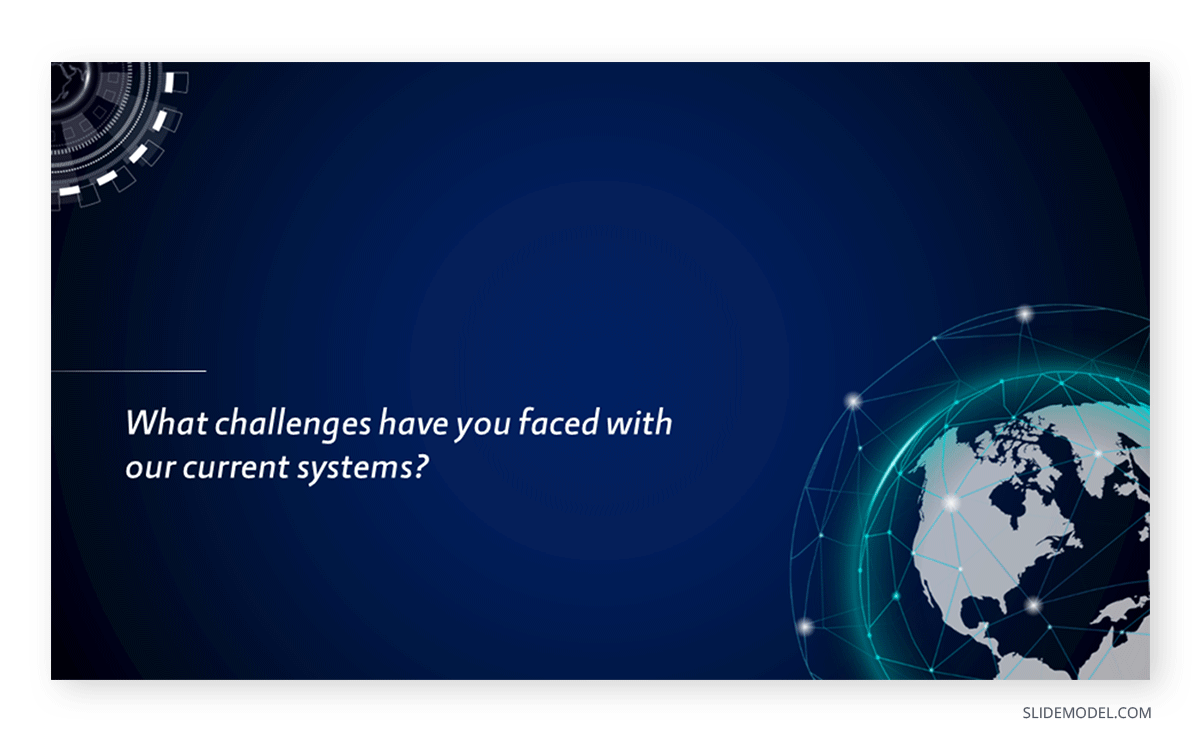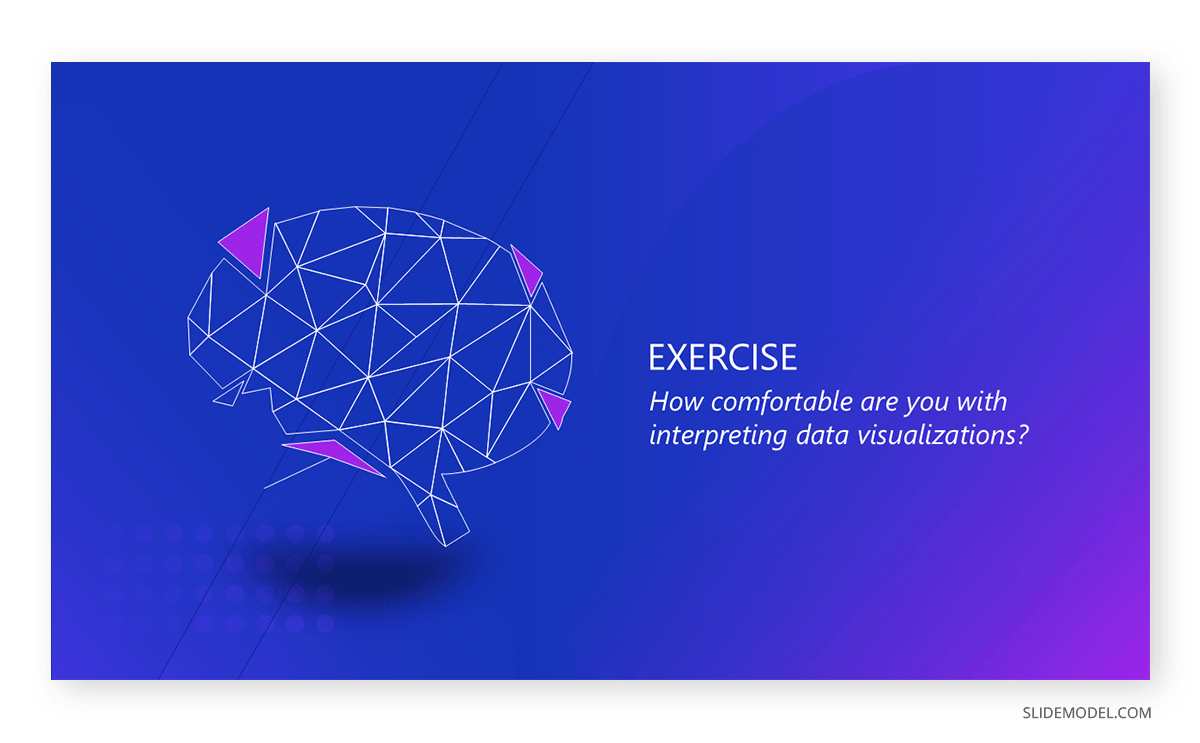
Presentations are not just about conveying information; they are about connecting with your audience, sparking interest, and fostering an environment conducive to learning and collaboration. One of the most effective tools to achieve this is using icebreaker questions. These questions serve to “break the ice” by easing tension, encouraging participation, and building rapport among participants, but how do we effectively implement them?
Join us today to learn about the significance of icebreaker questions, strategies for crafting great icebreakers, and when to place them in the typical presentation flow.
Table of Contents
- What are Icebreaker Questions?
- The Importance of Icebreakers in Presentations
- When to Use Icebreaker Questions in Presentations
- How to Craft Great Ice Breaker Questions
- Icebreaker Generator Tools
- Final Thoughts
What are Icebreaker Questions?
Icebreaker questions are strategically crafted queries typically placed at the beginning of presentations to stimulate interaction and diminish any initial awkwardness between the presenter and the audience. They play a crucial role in setting the tone for the session, helping to integrate the audience with the narrative. As a result, attendees feel valued and more willing to contribute throughout the presentation itself.
The concept of icebreaker questions is rooted in psychology and social dynamics. Humans are inherently social beings, but they may experience anxiety or reluctance to engage in unfamiliar settings. Icebreaker questions catalyze the overcome these barriers. By prompting participants to share something about themselves, their thoughts, or experiences, these questions help establish connections and create a sense of community.
The Importance of Icebreakers in Presentations
In presentations, especially those involving team meetings, conferences, or workshops, icebreaker questions are instrumental. They are not merely casual conversation starters but are thoughtfully designed to align with the presentation’s objectives and the audience’s interests. For instance, in a team meeting focused on innovation, an ice breaker question like “What’s the most creative solution you’ve come up with in your work?” can not only ease participants into the discussion but also prime them for the topic at hand.

In settings where participants may not know each other, such as conferences or cross-departmental meetings, icebreaker questions help build connections. They serve as a social lubricant, reducing apprehension and fostering a sense of camaraderie. Team ice breaker questions, in particular, are designed to strengthen relationships within a group, which can lead to improved collaboration and productivity.
Well-crafted icebreaker questions can pique the audience’s interest and stimulate curiosity about the presentation’s content. Presenters can encourage participants to think critically and become more invested in the material by posing thought-provoking questions related to the topic.
Icebreaker questions can also serve as a tool for gathering insights about the audience’s knowledge level, attitudes, or experiences. This information can be invaluable for tailoring the presentation to suit the audience’s needs better.
For example, in a training session on new software, asking, “What challenges have you faced with our current systems?” allows the presenter to address specific concerns and make the session more relevant.

When to Use Icebreaker Questions in Presentations
Timing is critical to the effectiveness of icebreaker questions. Knowing when to introduce these questions can enhance audience engagement and ensure they contribute positively to the presentation’s flow and objectives. While there is no one-size-fits-all answer, understanding the dynamics of different presentation scenarios can guide presenters in making optimal choices.
At the Beginning of the Presentation
The most traditional and widely practiced timing for icebreaker questions is at the very start of the presentation. This approach leverages the initial moments when participants settle in and set their expectations. Presenters can immediately engage the audience, reduce initial tensions, and establish an interactive atmosphere by introducing an icebreaker question early on.
For example, in a team meeting focused on quarterly goals, a presenter might begin by asking, “What’s one achievement you’re proud of from the last quarter?” This question breaks the ice and aligns participants with the meeting’s purpose.

During Transitions Between Topics
In longer presentations or workshops covering multiple topics, attention spans can wane, and energy levels may drop. Introducing icebreaker questions during transitions can re-energize the audience and refocus their attention. These questions can relate to the upcoming topic, serving as a mental break and a primer for what’s next.
For instance, before moving to a section on customer engagement strategies, a presenter might ask, “Can anyone share a memorable customer service experience they’ve had?” This encourages participation and smoothly segues into the new topic.
When Introducing Complex or Challenging Material
Presentations that involve technical or complex material can benefit from icebreaker questions to prepare the audience. Presenters can tailor their delivery accordingly by gauging the audience’s existing knowledge or attitudes.
Before delving into detailed analytics, a presenter might ask, “How comfortable are you with interpreting data visualizations?” The responses can inform the depth of explanation required.

In Virtual or Remote Presentations
The rise of remote work has made virtual presentations commonplace. In these settings, maintaining engagement is more challenging due to physical distance and potential distractions. Using icebreaker questions becomes even more critical.
At the outset of a virtual meeting, an icebreaker question like “What’s the best piece of advice you’ve received while working from home?” can foster connection and encourage participation in a setting where people might otherwise feel disconnected.

With New or Unfamiliar Groups
When presenting to a group of individuals who are unfamiliar with each other, such as at conferences or cross-departmental meetings, icebreaker questions can help build rapport among participants. This is particularly important in collaborative settings where interaction is essential.
For example, at a Pecha Kucha presentation, the speaker might use a group icebreaker question like “What motivated you to attend this session?” This not only encourages networking but also provides insight into participants’ interests.
After Breaks or Intermissions
Resuming a presentation after a break can sometimes be challenging as participants may be distracted or disengaged. Introducing a quick icebreaker question can recapture attention and smoothly transition back into the content.
An example could be, “During the break, did anyone come up with new thoughts or questions about what we’ve discussed so far?” This invites reflection and reinvigorates the discussion.
When Addressing Sensitive Topics
Presentations that touch on sensitive or potentially contentious issues may benefit from carefully crafted icebreaker questions to ease into the subject matter. These questions should be handled delicately to ensure they promote openness without causing discomfort.
Before discussing organizational changes, a presenter might ask, “What are some positive experiences you’ve had with change in the workplace?” This frames the topic in a constructive light.

How to Craft Great Ice Breaker Questions
Great ice breaker questions resonate with the audience, align with the presentation’s objectives, and stimulate meaningful interaction. Crafting such questions requires a deep understanding of the audience, clarity of purpose, and creativity. This section will explore strategies and considerations for developing icebreaker questions that enhance your presentations.
Understanding the Audience
The foundation of any effective icebreaker question is a thorough understanding of your audience. Consider factors such as:
- Demographics: Age, cultural background, professional experience, and education level can influence how participants perceive and respond to questions.
- Group Dynamics: Are participants familiar with each other? Is it a team meeting, a cross-departmental gathering, or a public conference?
- Interests and Expectations: What are the participants’ reasons for attending? What do they hope to gain?
For example, a more formal and business-focused question like “What emerging market trends are you most interested in exploring?” may be appropriate in a meeting with senior executives. In contrast, a team-building session with a creative department or an HR psychologist might benefit from a more playful question like “If our team were a band, what role would you play?”
Keeping Answers Open-Ended
Aside from aligning the questions with the presentation objectives, presenters should avoid the typical Yes/No questions. This approach guarantees that the answers delivered by the audience are elaborate, relatable, and can encourage storytelling scenarios.
Presenters should also be mindful of sensitive topics, in particular those that can arise conflictive scenarios, as when asking about political views. Instead, make sure the question is relevant to all participants without being potentially divisive.
Being Creative
Using hypotheticals is a great resource to harness as you can allow imagination to flow. For instance, you can ask in a corporate setting something like: “If you could travel anywhere in the world right now, where would you go and why?” It may sound completely unrelated to the topic, but it can give you hints about career preferences, about what employees value, and plenty of other answers that can reframe a company’s culture.
On the other hand, humor can lighten the mood, so questions like “What’s the most unusual job you’ve ever had?” invite the audience to a relaxing time filled with anecdotes.
Icebreaker Generator Tools
Icebreaker generator tools are online platforms or applications that provide users with randomly generated icebreaker questions or prompts. They often categorize questions based on themes, group sizes, or settings, making it easier to find questions that suit your specific requirements. These tools can range from simple websites with lists of questions to more sophisticated applications that allow for customization and interactive features.
The first option we should consider is ChatGPT for presentations, as it can help us to create detailed lists of icebreaker questions by topic if we create the proper ChatGPT prompt for it.
There are plenty of websites that can offer meeting ice breakers, as well as online applications like SessionLab. Mobile apps are an option, but for carefully designed conference ice breaker questions it may be uncomfortable to transfer the content from your phone to presentation files. Use them as an alternative but not as a first choice.
Final Thoughts
Presentations are more than just a platform to convey information; they are opportunities to influence, motivate, and bring people together. Icebreaker questions are a simple yet effective tool in achieving these outcomes. Embrace the potential they offer, and you’ll find that your presentations become more engaging, impactful, and successful.


